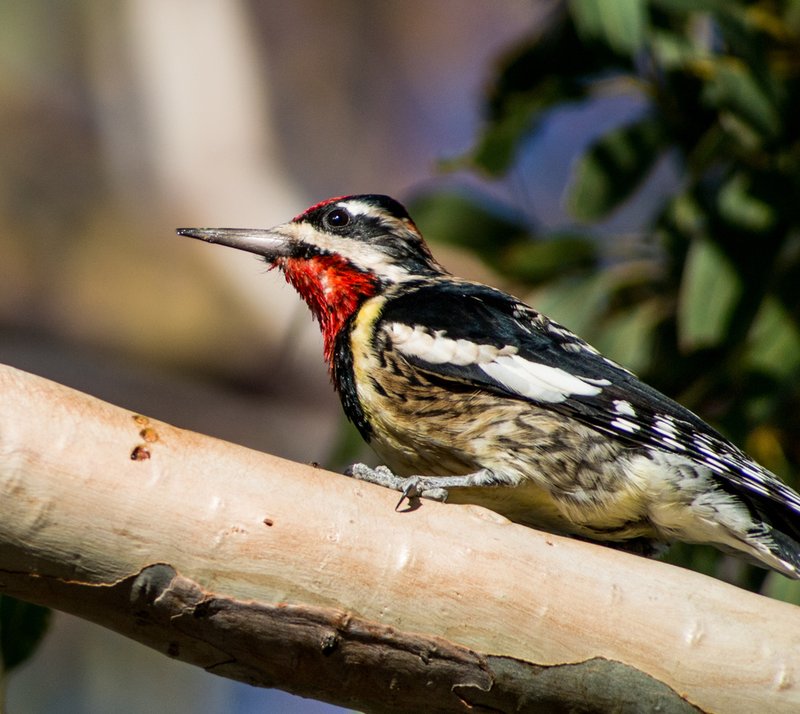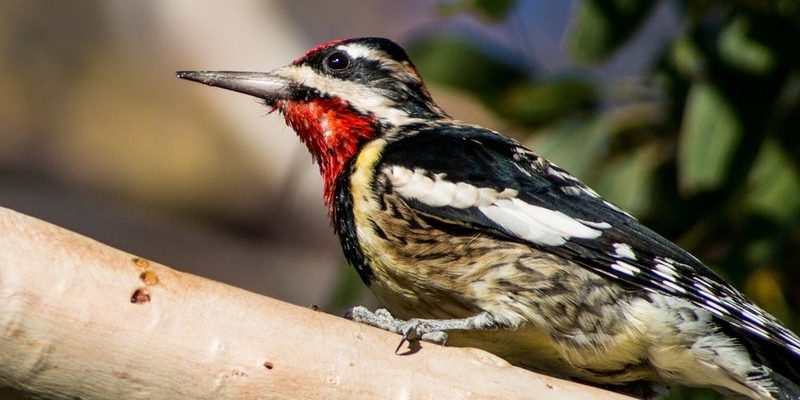
Have you ever heard of a bird that literally drinks tree sap? That’s right! The sapsucker is a type of woodpecker that has a fascinating and unique diet. These birds drill small holes into the bark of trees, creating little wells that fill with sap. It’s like they’re nature’s little chefs, crafting a sweet treat straight from the tree. You might imagine them as tiny artisans, skillfully creating a source of nourishment from the heart of a living tree.
There are several species of sapsuckers, with the most common being the Yellow-bellied Sapsucker. These birds are known for their striking appearance—think black-and-white striped heads and bright yellow bellies. They’re not just pretty to look at; they play a crucial role in their ecosystems. By boring holes into trees, they can help other animals access the sap, as well as provide nesting sites. In many ways, sapsuckers are the unsung heroes of the forest.
Physical Characteristics
When it comes to size, sapsuckers are relatively small birds, measuring about 7 to 9 inches long. Their wings are strong and designed for quick, agile movements as they flit from tree to tree. Each species has its own striking color palette. For instance, the Yellow-bellied Sapsucker sports a distinctive yellow belly and a black back, while the Red-naped Sapsucker showcases a vibrant red on its nape and throat. These bright colors serve a purpose: they help attract mates and signal territory to other birds.
But it’s not just about looks. Sapsuckers have specialized tongues that can extend to retrieve sweet sap from the holes they create. This tongue is not only long but also has a brush-like tip, making it easier for them to lap up the sticky sap. Imagine using a straw specially designed to sip from the tree’s sugary treat; that’s essentially what they’re doing!
Habitat and Distribution
Sapsuckers can be found across North America, typically in mixed woodlands and forested areas. They prefer trees with softer bark, such as birches, maples, and alders, as these species provide easier access to the sap inside. You’ll often spot them in areas that feature both coniferous and deciduous trees, which support their diverse feeding habits.
As the seasons change, sapsuckers migrate between northern breeding grounds and more temperate winter habitats. During the breeding season in spring, they can be spotted in higher elevations, while in the winter, they often migrate south. This seasonal wandering not only helps them find adequate food but also ensures they can raise their young in a safe environment.
Diet and Feeding Habits
The diet of a sapsucker is quite interesting. As their name suggests, they primarily feed on tree sap, but that’s not all! Sapsuckers are also known to consume insects, especially when they’re feeding their young. This makes them important players in controlling insect populations in their habitats. Their unique feeding method allows them to tap into the sweet sap while also snacking on the insects that are attracted to the same source.
During the spring season, sapsuckers will strategically drill several holes around a tree to create a network of sap wells. These holes can actually heal over time, allowing the tree to survive. Think of it as a partnership: the tree provides a sugary reward, and in turn, the sapsucker helps to pollinate the tree by spreading the sap and attracting other wildlife.
Behavior and Social Structure
Sapsuckers are known for their distinctive drumming sounds, which they make to signal their presence and establish territory. This drumming is part of their courtship rituals, especially during the breeding season. If you’ve ever been in a forest and heard a series of rapid pecking noises, it’s likely a sapsucker claiming its space. These birds are typically solitary outside of the breeding season, but you may find them in pairs during nesting time.
Interestingly, sapsuckers are also social birds in the sense that they often share their feeding sites with other species. When a sapsucker finds a good sap source, it’s common for other birds to enjoy the feast as well. This open attitude toward sharing resources highlights their role in the broader ecosystem and the intricate connections between species.
Reproduction and Nesting
When it comes to reproduction, sapsuckers usually mate for life, establishing strong bonds that last through the seasons. Courtship begins in the spring when male sapsuckers perform elaborate displays to attract a mate, including their impressive drumming and vibrant plumage. Once a pair forms, they work together to build a nest, which is often found in tree cavities, typically about 10 to 50 feet off the ground.
The female will lay around 4 to 7 eggs, which both parents help incubate. After about two weeks, the chicks hatch and are fed a mix of sap and insects. This nurturing behavior is crucial for their young’s survival, as the parents must provide enough nutrition to help them grow strong. After a few weeks, the young sapsuckers will leave the nest and begin to explore their surroundings, preparing for a life of their own.
Threats and Conservation
While sapsuckers are relatively widespread, they are not without threats. Habitat loss due to deforestation and urban development poses a significant risk to their populations. Additionally, climate change can impact the availability of their preferred trees and may alter their migration patterns. It’s important for us to advocate for conservation efforts to protect the natural habitats that sustain these unique birds.
Many organizations are working to preserve forests and promote sustainable land practices. Supporting these initiatives can help ensure that sapsuckers and other wildlife can thrive for years to come. After all, every little effort counts when it comes to helping our feathered friends!
Interesting Facts About Sapsuckers
| Species: | Yellow-bellied, Red-naped, Red-breasted, Williamson’s |
| Size: | 7 to 9 inches |
| Wingspan: | 16 to 20 inches |
| Diet: | Sap, insects |
| Nesting: | Cavities in trees |
| Native Range: | North America |
| Lifespan: | Up to 9 years |
FAQ
What is the role of sapsuckers in the ecosystem?
Sapsuckers play an essential role in their ecosystems by helping to pollinate trees and providing food sources for other animals. When they drill holes in trees for sap, they create opportunities for other species to benefit from the sap, thus linking various wildlife together through this resource. They also help control insect populations, making them a vital part of their habitat’s health.
Are sapsuckers aggressive towards each other?
Generally, sapsuckers are not aggressive towards each other unless it’s breeding season. During this time, males may display territorial behaviors, such as drumming and showing off their plumage to defend their nesting site. Outside of breeding season, they usually keep to themselves, though they may gather at abundant feeding sites.
How can I attract sapsuckers to my backyard?
If you want to attract sapsuckers to your yard, providing a habitat with the right types of trees is key. They are particularly attracted to maples, birches, and other soft-barked trees. You can also consider putting up bird feeders that contain suet, which mimics the types of food they would naturally seek out. Observing them can be a delightful experience!
What sound does a sapsucker make?
Sapsuckers are known for their distinctive drumming sound, which they use to establish territory. The sound is a series of rapid taps that can be heard from quite a distance. In addition to drumming, they also make a variety of calls that can sound like a series of high-pitched notes. These vocalizations play a role in communication and mate attraction.
Do sapsuckers migrate?
Yes, sapsuckers do migrate. They typically move south during the fall to find warmer climates where food is more abundant. Their migration patterns can vary depending on the species and environmental conditions. It’s quite a sight to see large groups of sapsuckers traveling together during their seasonal shifts.
How can I help sapsuckers in my area?
You can help sapsuckers by supporting local conservation efforts and promoting sustainable land use practices. Planting native trees and preserving natural habitats in your backyard can also provide safe spaces for them to thrive. Educating others about their importance in the ecosystem can amplify your efforts and encourage more people to protect these amazing birds!
Are sapsuckers solitary or social?
Sapsuckers are mainly solitary outside the breeding season, but they do form pairs during mating season. While they usually keep to themselves, they can be quite social when feeding, often sharing resources with other birds. This social behavior highlights their integration into the community of forest wildlife.
What do sapsuckers do during the winter?
During the winter months, sapsuckers migrate to warmer areas where food sources are more plentiful. In these regions, they continue to feed on sap and insects, adapting to their environment. The winter is a crucial time for them to conserve energy and maintain their health before returning to their breeding grounds in spring.
Can sapsuckers damage trees?
Yes, sapsuckers can cause some damage to trees by boring holes into the bark. However, their impact is generally minimal, especially if the trees are healthy. The holes often heal over time, allowing the trees to recover. It’s important to remember that sapsuckers contribute to the forest ecosystem, and their actions can lead to new growth and biodiversity.
What is the best time to see sapsuckers?
The best time to see sapsuckers is during the spring and early summer when they are actively perched on trees and drilling holes for sap. Their vibrant colors make them a beautiful sight during this time. If you’re looking to catch a glimpse, early mornings or late afternoons are typically when they are most active.
How long do sapsuckers live?
Sapsuckers can live for up to 9 years in the wild, though many factors can influence their lifespan, including availability of food, predation, and habitat conditions. By maintaining healthy ecosystems and providing suitable environments, we can help ensure they thrive for many generations to come.

